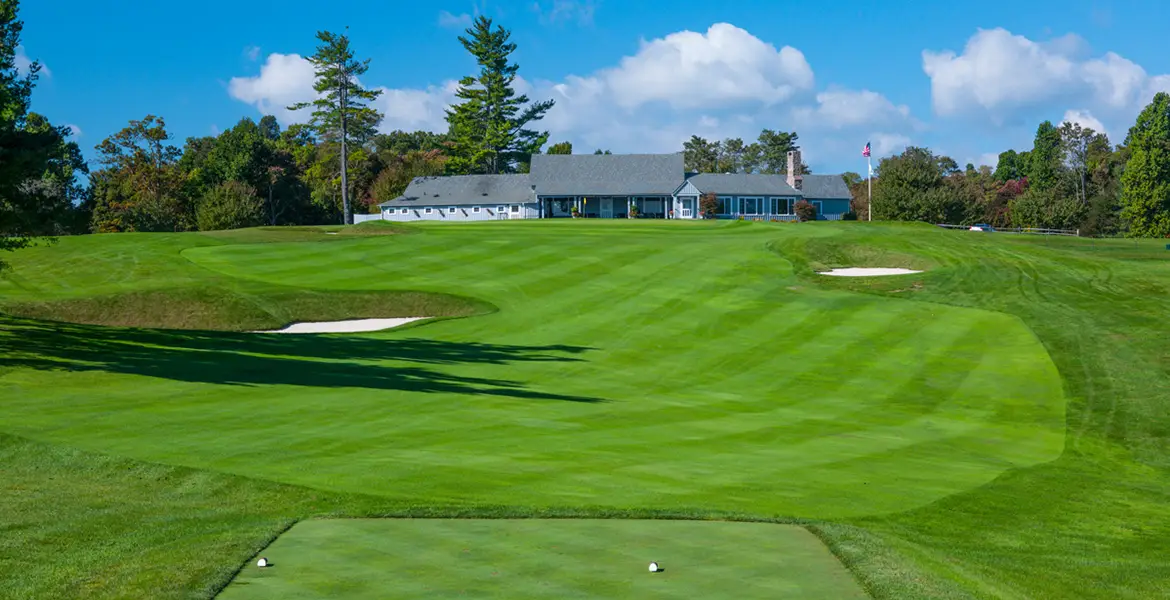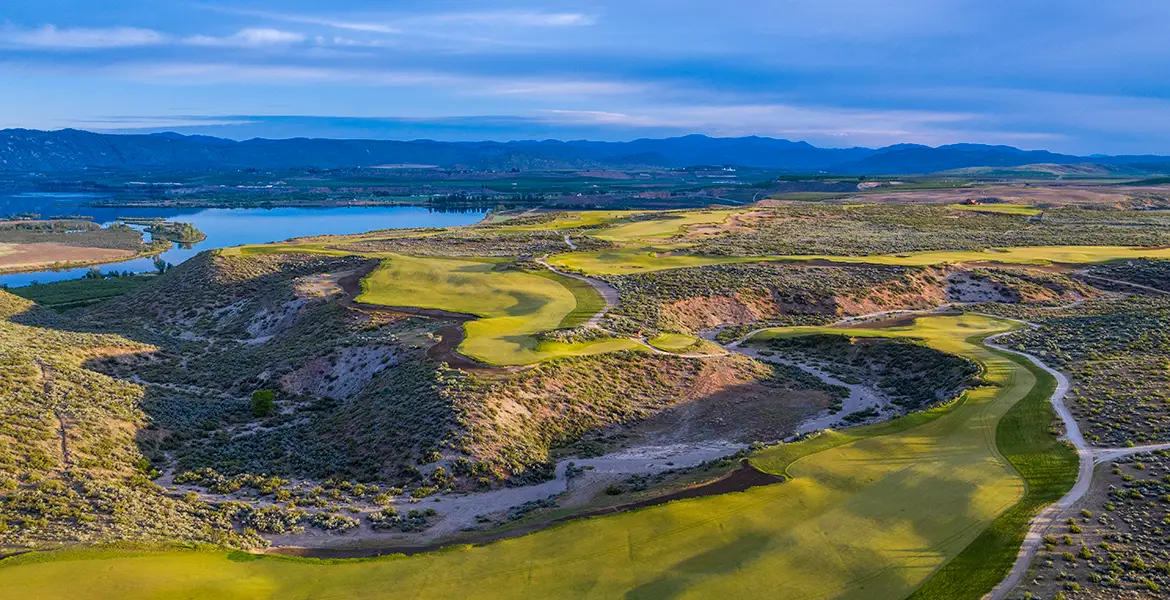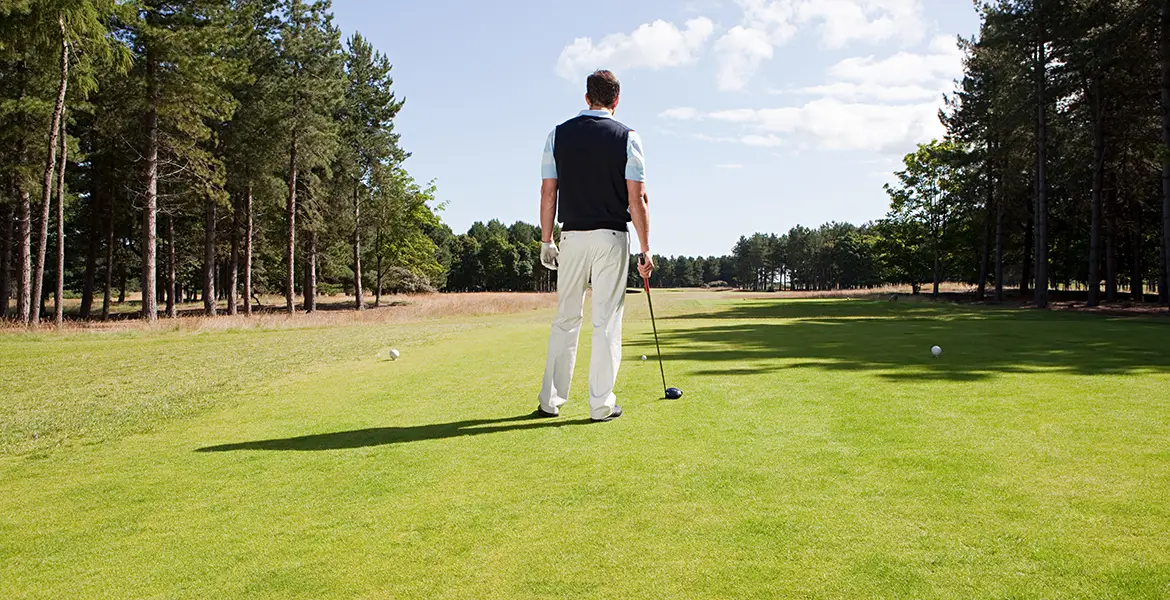By Tony Dear

It’s Players Championship week at TPC Sawgrass which means we get to examine the legitimacy of Pete and Alice Dye’s ever-controversial island green at the 17th. Thirty-nine years after it opened, and 37 years after the little demon tormented PGA Tour pros for the first time, we’re still debating whether or not its straightforward design is worthy of praise or censure. Is it a fitting test for anxious tour pros nearing the end of a big-money tournament, or a cheap trick that appeals only to bloodthirsty Colosseum “Entertain me” spectators?
However you feel about it, it does at least get golfers talking. Here are five other notable island greens that garner less attention than the famous one at TPC Sawgrass.
1. 10th hole, original course at Baltusrol Golf Club
The island green thought to be the first ever built no longer exists. The circular putting surface and shallow moat that surrounded it were created shortly before Baltusrol staged the 1904 U.S. Amateur Championship, and thought to be the work of George Low, a Scottish transplant who served as the club’s professional, superintendent, and clubmaker from 1903 to 1925.
The green at the 330-yard par 4 attracted so much criticism, however, it wasn’t used for the tournament, and was replaced by a less formidable target.
The island green was reinstated at a later date, and was in place for the 1915 U.S. Open won by amateur Jerome Travers. Stung, though, by remarks from players who said the course possessed too many short par 4s, the club hired A.W. Tillinghast a few months after the Open to create a longer, more demanding layout. The 10th hole and its island green were lost.
In 1920, Tillinghast returned to create “dual courses” for the club—the Upper and Lower, and utilized the old green site for the Lower’s long par 3 16th, surrounding the green not with water, but bunkers.
Tillinghast clearly wasn’t afraid to build island greens, however, having created one at Shackamaxon Country Club (par 4 18th), in Westfield, N.J., in 1916, and another at Galen Hall (par 3 15th) in Wernersville, Penn., in 1917.
2. 9th hole, Ponte Vedra Inn & Club (Ocean)
English immigrant Herbert Strong, a club professional and founding member of the PGA of America, competed in that 1915 U.S. Open at Baltusrol where he finished tied for 26th. After transitioning into course design in the 1920s, Strong built more than two dozen courses and, at one point, actually had plans to form a partnership with George Low.The proposed enterprise never happened, though Strong had obviously made a mental note of Low’s island green at Baltusrol as he built one himself at Ponte Vedra Inn and Club in 1928. Unlike Low’s original which had little more than a ribbon of rough between the putting surface and water, Strong’s version, on the 157-yard 9th at Ponte Vedra, was surrounded by almost half an acre of dry ground (fairway cut, rough, and seven bunkers) making the water carry a reasonable challenge for vacationing golfers, though Robert Trent Jones was hired in 1947 to make it even more accommodating for the holidaymaker. The course was selected to host the 1939 Ryder Cup which wasn’t played because of the onset of WWII.
3. 14th hole, Coeur d’Alene
The 22,000-ton modular concrete platoon that incorporates the world’s first floating green was designed and built by Bellingham Marine of Bellingham, Wash. It spans 15,000 square-feet (half of it putting surface) and debuted on May 1, 1991 when 40-knot winds and five-foot waves shut it down temporarily.
Reached by the electrically-operated “Putter” boat, the daunting par 3 measures 218 yards at its longest but can play a good deal shorter thanks to a system of underwater cables. Anyone making a three or better earns a certificate observing the achievement.

4. 3b Punta Mita (Pacifico)
The prize for most beautiful island green must surely go to the lava rock-walled “Tail of the Whale”—hole 3B—on Jack Nicklaus’s Pacifico Course at the Punta Mita Resort on Mexico’s Riviera Nayarit. Entirely natural (well, apart from the putting surface), the 199-yard hole can be reached on foot or by cart at low-tide. If it’s high-tide (tide times are posted in the pro shop), guests can return later in the day to play it—surely only the least quixotic, most unadventurous of golfers would choose not to.

5. 17th PGA West (Stadium)
When PGA Tour commissioner Deane Beman, and PGA West’s developers Ernie Vossler and Joe Walser, asked Pete Dye to build them a penultimate hole par 3 similar to the 17th at Sawgrass which he’d created six years prior, Pete Dye was reluctant fearing both original and duplicate would lose their “uniqueness.” Dye eventually relented and, to ensure distinctions between the two holes, made PGA West’s version—named “Alcatraz”—30 yards longer with a significantly larger green. And instead of railroad ties, he ringed the green with boulders.
___________________________
Have you played a course with an island green? If so, what did you think of it? Tell us in the comments below.






